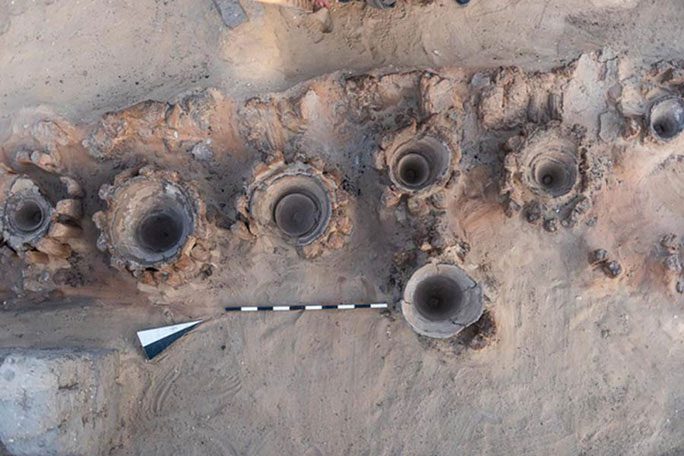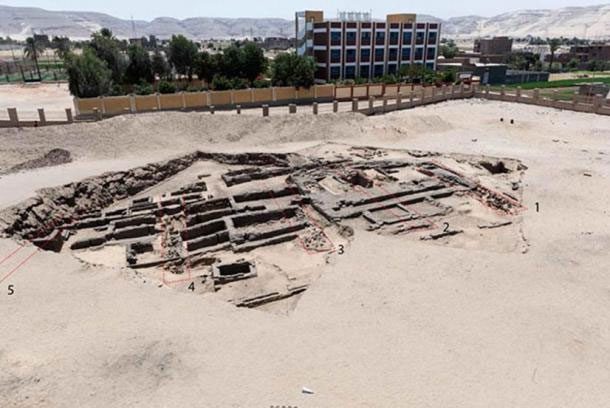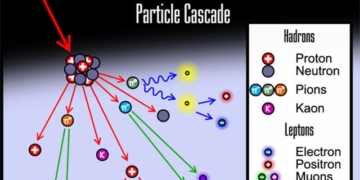In the ancient city of Abydos near the Nile River, American and Egyptian archaeologists have recently unearthed the 5,000-year-old remains of a massive industrial-scale brewery, capable of producing 50,000 liters of finished beer per brewing batch.
This shocking discovery reveals that at a time when much of humanity was still taking its first steps in Stone Age villages, the Egyptians had organized their lives in an unimaginably modern way.
According to Ancient Origins, although evidence of ancient beer has been found in many civilizations dating back 5,000 to 13,000 years, this is one of the earliest pieces of evidence for industrial-scale beer production ever discovered.

Large ceramic vessels with various uses in the brewing process arranged in huge lines, operating in harmony with a capacity that rivals modern breweries – (Photo: Supreme Council of Antiquities of Egypt).
According to Mr. Mostafa Waziri, Secretary-General of the Supreme Council of Antiquities of Egypt, evidence suggests that this ancient brewery operated during the reign of Pharaoh Narmer, who unified Egypt at the beginning of the First Dynasty (circa 3150 to 2613 BC).
The brewery consists of 8 massive production lines, each measuring 20 to 35 meters in length and 2.5 meters in width, containing up to 80 ceramic basins used for grinding ingredients, boiling grain mixtures, and water…
If all structures operated simultaneously, this brewery could produce up to 50,000 liters of finished beer per batch. This beer was supplied to many major cities across the empire.

Remains of the brewery in Egypt – (Photo: Supreme Council of Antiquities of Egypt)
“This represents a truly industrial scale of production, even by modern standards” – Abydos Archaeology quotes the researchers.
Egyptian civilization has long captivated archaeologists, as it seems the Egyptians built a world of their own with a level of technology and social organization that was timeless compared to the rest of the world. Archaeologists suspect that the Egyptians “industrialized” production activities in many other fields, with many surprising relics still hidden in the desert.


















































